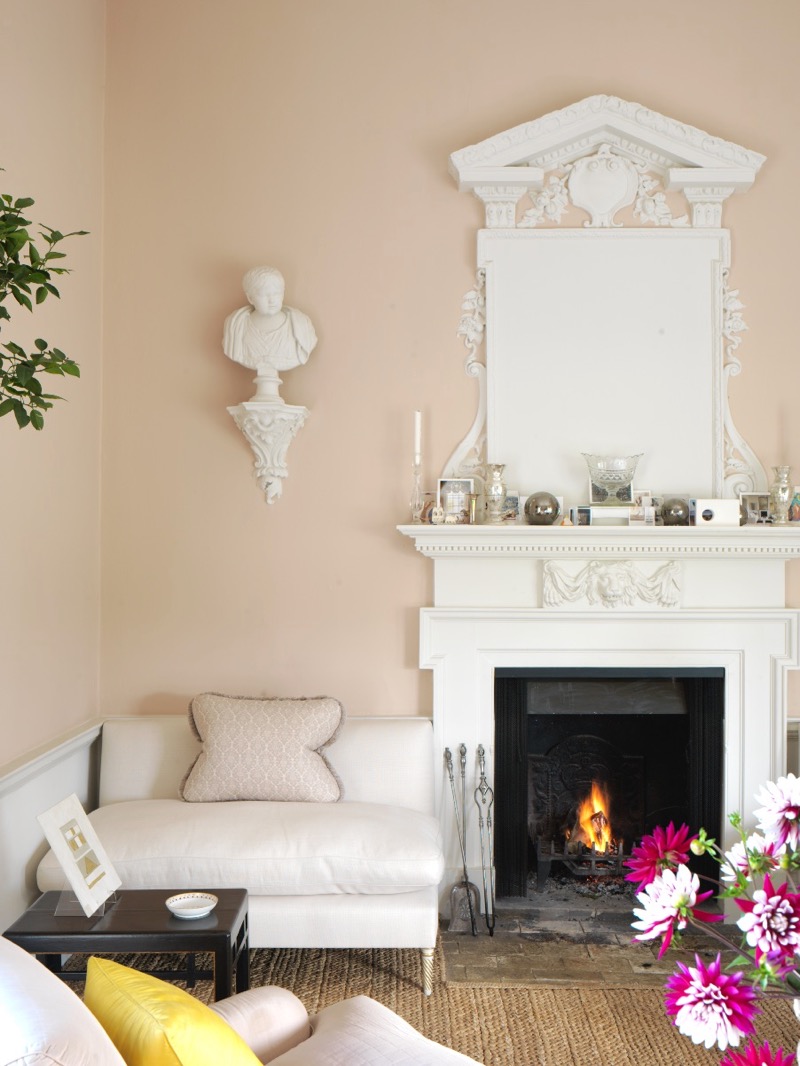
Veere Grenney is the interior decorator feted for his chic, very English style. Our friendship began half a dozen years ago when he asked me to help with On Decorating, the book he was writing, It gave me a perfect excuse to ask all about his youthful travels on the hippy trail, selling antiques at Portobello market, worshipping David Hicks from afar, learning his craft at Colefax and Fowler, his eighteenth century fishing temple in rural Suffolk and the stunning new house he was building on Tangier’s Old Mountain in his beloved country of Morocco. We walked our lurchers round Regents Park together once a week, Bunny my brindled Dartmoor bitch and his Rio, long-coated like a Flokati rug – a custom we’ve kept going – then sat down to coffee and our ‘work.’ One day then, ace decorator Rita Konig sent me a completely brilliant email about a dinner conversation she’d had with Veere, for a section of his book which very sadly didn’t make the final edit. So here it is now, reproduced in full, the perfect introduction to Veere’s own words – NOW READ ON

Rita on Veere : I can’t remember where I met Veere but it was quite a long time ago and it was sitting next to him at dinner – where he is an excellent draw – I took to him pretty instantly because he was this super chic man and he told me all about his early days living in London in squats. Imagine having Veere as a squatter in your property!!! Imagine Veere being a squatter!! Totally brilliant and of course showed him to be a person of many facets. I love Veere’s work. He is a contemporary John Fowler. His rooms are ones you want to be in and I love his palettes, he is a master at pale pink as well as strong colours – a chocolate brown Fortuny dining room, moss green mohair walls, yes please.
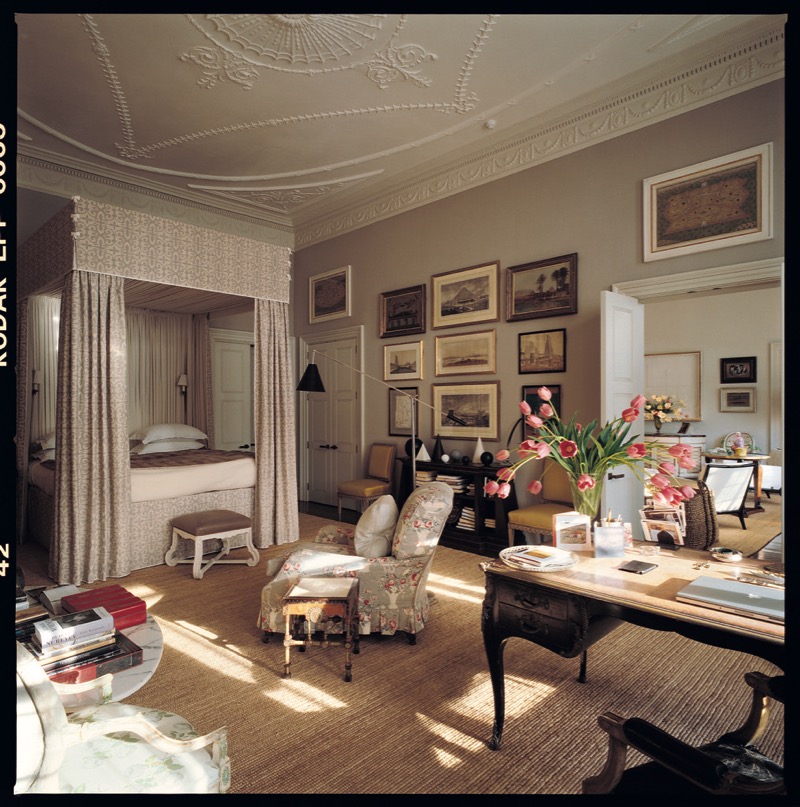
One of my favourite rooms ever is his bedroom on Cheyne Walk that he refers to as the Bedsit
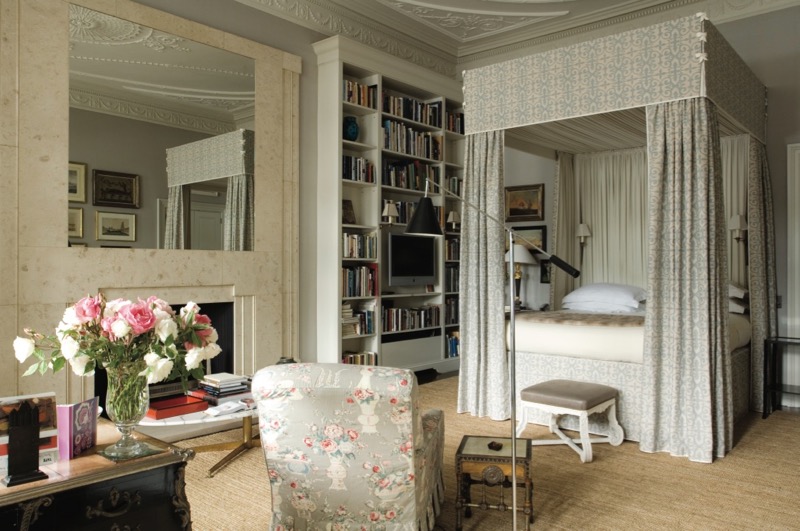
and naturally – as is always true with Veere – it is class, it comes top who wouldn’t want a Veere Grenney bedsit! I can’t wait to see what he has done with his house in Tangier.
XXX
Rita

My childhood was in New Zealand, a pleasant and distant land, still rooted in England in all its forms and a society anchored to the land. Affluent but middle class, “Surrey in the South Pacific “ yet still egalitarian, thanks to the legacy of its Scottish settlers.Then as now, houses were my abiding interest. Those I looked at and lived in were weather-boarded, with large verandas or inspired by Arts and Crafts, Voysey, Webb and even Lutyens. (Even my school chapel at Kings College was modelled on the alma mater, Kings College Cambridge. ) All were built and designed for comfortable suburban living, with gardens, tennis courts and rose beds. I lapped it all up, dreaming of greater things.I had a voracious appetite to see people’s houses, their antiques, the layouts, the patina (if there was such a thing in a new society) – and I heard – from the few who I looked up to – that shabby was OK . I couldn’t quite cope with that , and still can’t but I understood only too well , even then, that social establishment goes with permanence . My mother loved houses too so we moved a lot, satisfying our shared decorating lust and my dad’s quiet pleasure in ascending the social ladder.
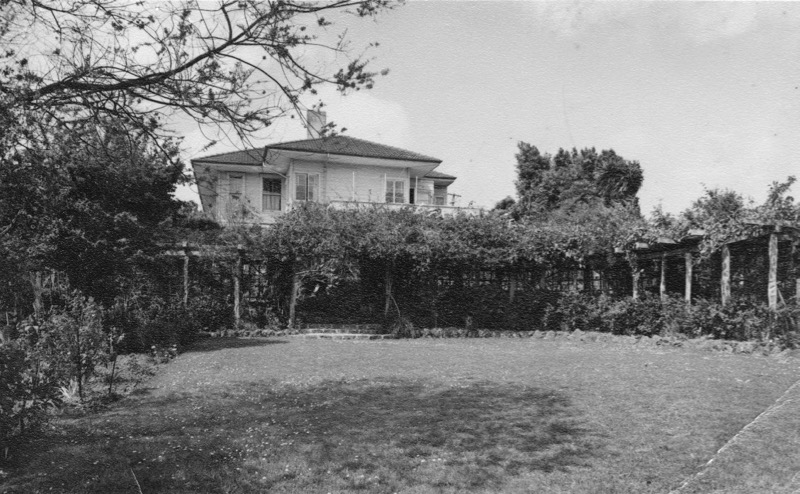
This is probably house no 3. I was 16 and already in full decorator mode. it was an early verander-ed homestead that had been modernised in 1966, its garden reduced to an acre and a half, the remnants of the tennis lawn just visible – but with panoramic views of the harbour I thought it was as good as it got!!
But now I found a new definition of what was beautiful and chic. In the English magazines I was reading, David Hicks had begun turning the establishment’s houses upside down with geometric patterns and shocking colours. The USA’s House Beautiful showed me ‘feature walls’ and ‘conversation pits,’ three car garaging and shag pile carpets!
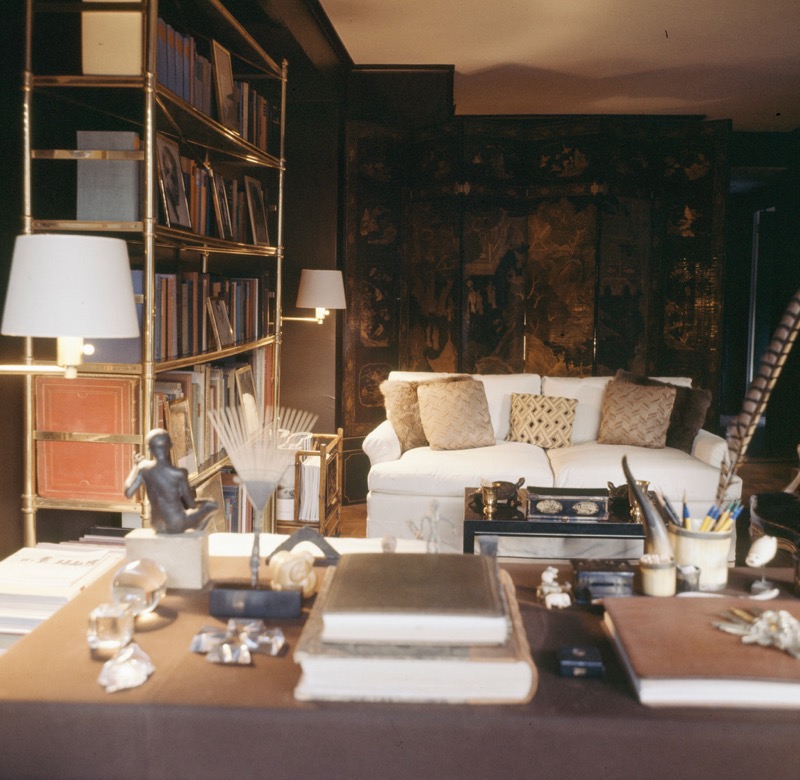
The American decorator Billy Baldwin was just as clever and inventive as David Hicks ! All too exciting for words and I desperately wanted to live in their worlds too.

Thanks to Hicks I covered the walls of my own bedroom in orange hessian.

The floor was done in black and white tiles, there was a Victorian brass bed, the furniture was painted in gloss black and I bought yellow blow-up chairs in Sydney. The centrepiece on my wall was a beautiful framed photograph of Jim Morrison with a crown of thorns above his angelic face. Possibly my first subconscious stirrings of homoerotic love, as two photographs of Jean Shrimpton and Pattie Boyd were relegated to less prominent positions. When I was describing this room in a lecture I tried to illustrate it with this drawing
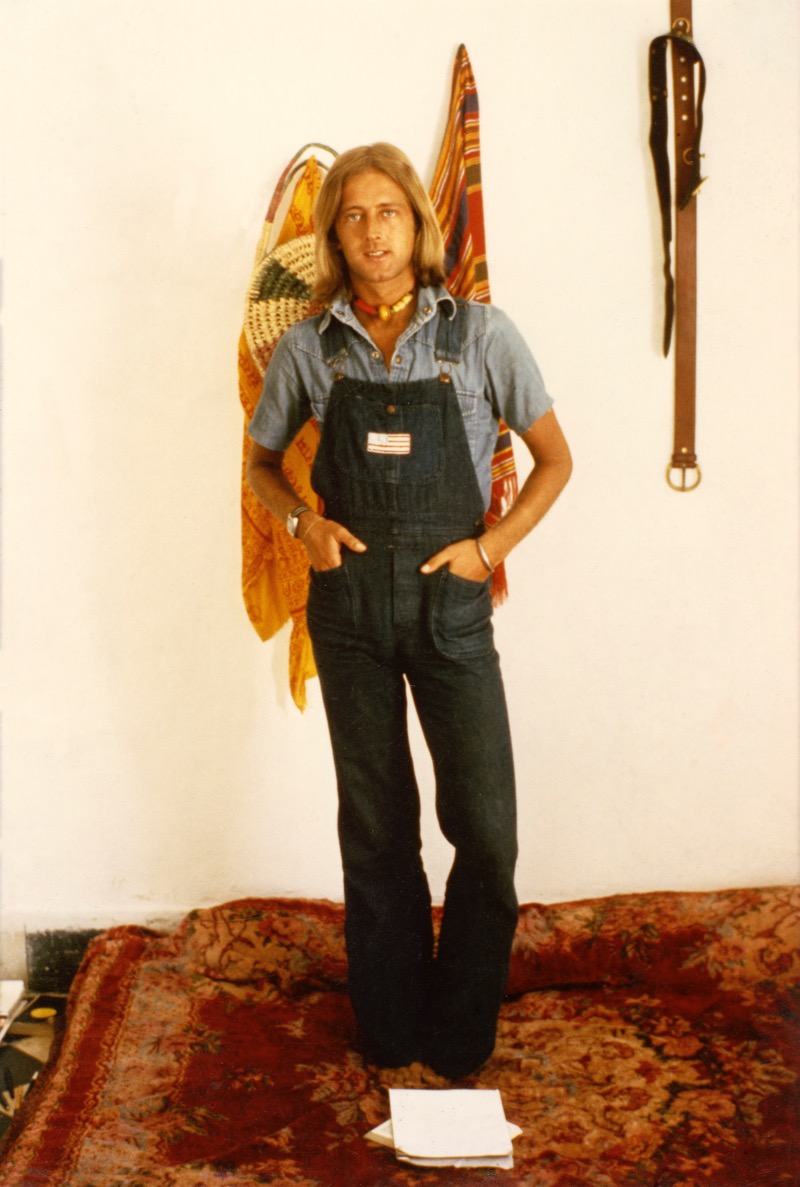
Years of travel on the hippy trail followed. By the mid 70s I was finally in London, in a flat-share in Disraeli Road in ,Putney.
I slept in a large cupboard or closet as friends love to remind me, but soon baled out to live in a single large white room above a beautiful bookshop in Warwick Place, Little Venice. This was my first home of my own in London and the place where I fell in love for the first time. Its decoration was my priority, I hung or draped fabrics from New Guinea, Bali, Malaysia, Burma, Nepal, India, Afghanistan, Iran, Turkey and Morocco on the walls and every surface. I had collected them as I travelled, and any that I couldn’t carry became part of my wardrobe.
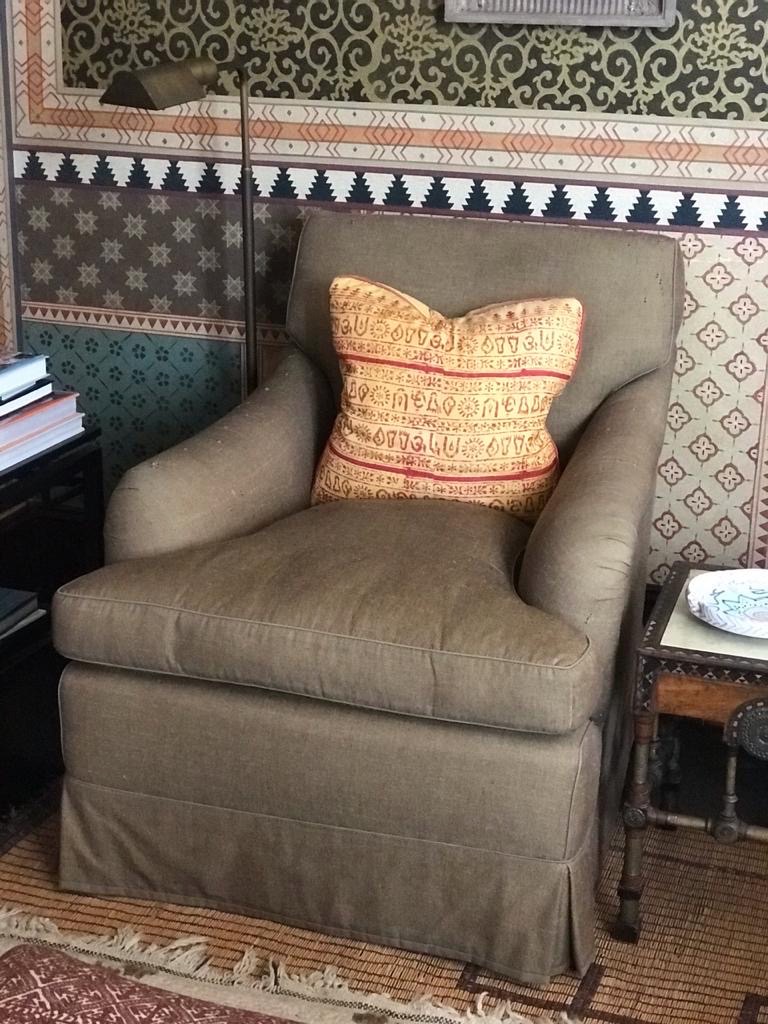
Almost 45 years later this cushion I have in Tangier is among the last remaining pieces of that collection. Furniture was minimal but the floor was all cushions and there was always a fire in the fireplace, the only form of heating. The two beautifully proportioned windows were hung with grand chintz curtains from my landlady and to the horror of cool friends, I adored then —- somehow if you love things they always hang together! The Library, Gazebo, Tangier.
Squatting
After another prolonged stay in Morocco I returned to London. My second place was a squat in Oxford Gardens. It was a huge house with lots of inhabitants (and many passing through) and my bay-windowed room held remnants of Warwick Place, no chintz sadly,
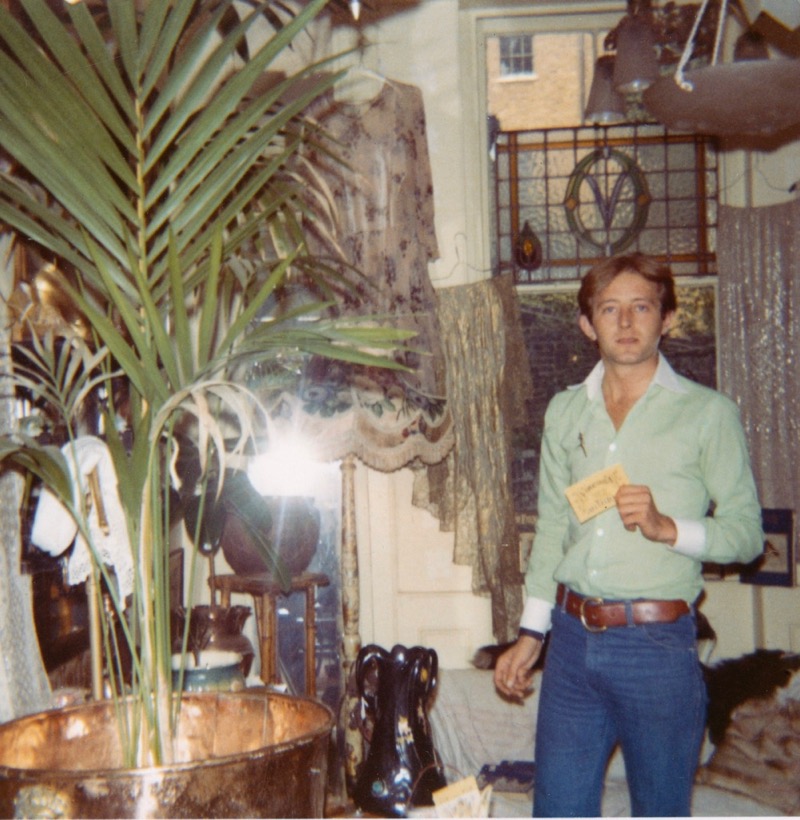
but lots of the Arts and Crafts pieces I was now selling from my stall in Portobello.
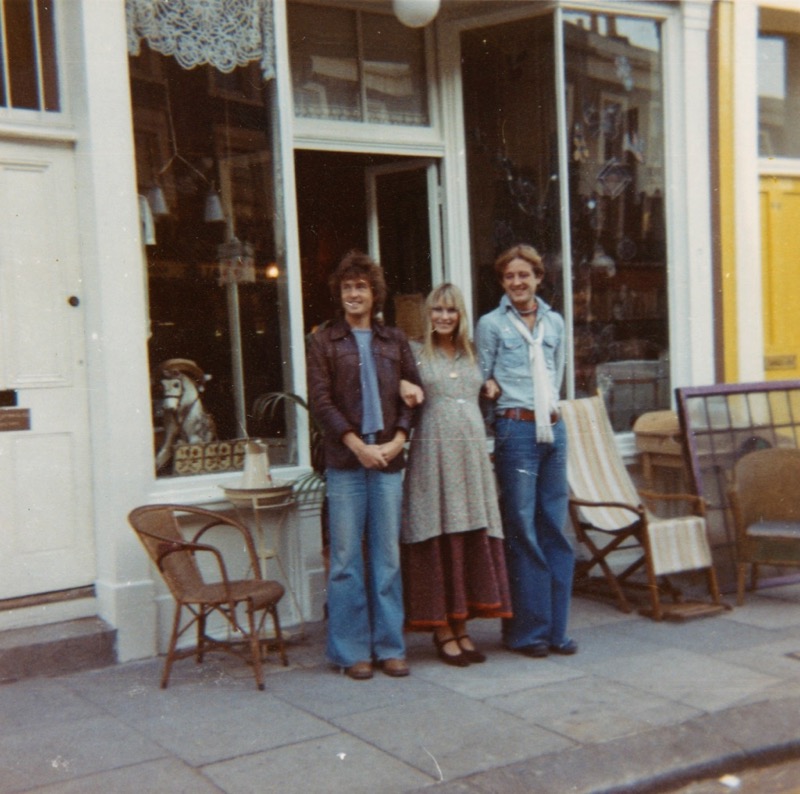
In the evenings I worked at Julie’s Restaurant close by in Clarendon Cross – the staff and a lot of the clientele were like-minded –my world was mainly Notting Hill – cheap, alternative, buzzy, cool, black, white, gay and straight. I was honing my love of decoration by dealing in decorative and fashionable ‘stuff,’ getting to know the dealers, watching the doyens of the decorating world from afar, getting a taste for it all and subliminally developing my own vocabulary of beauty.
Then came the 80s and my first real job. Seven years of Portobello and then a shop off Westbourne Grove had taught me about the world of the decorating houses. I knew many of the designers and this was the only world I wanted to belong to. I went to work with Mary Fox Linton – she was still in partnership with David Hicks – and I entered a new modern world of chic, sharp decorating with subtle palettez of mauves, pale pinks and green and lilac. These were used with ethnic patterned dhurrie rugs that we designed, Perspex furniture or pale limed oak – a new and exciting look
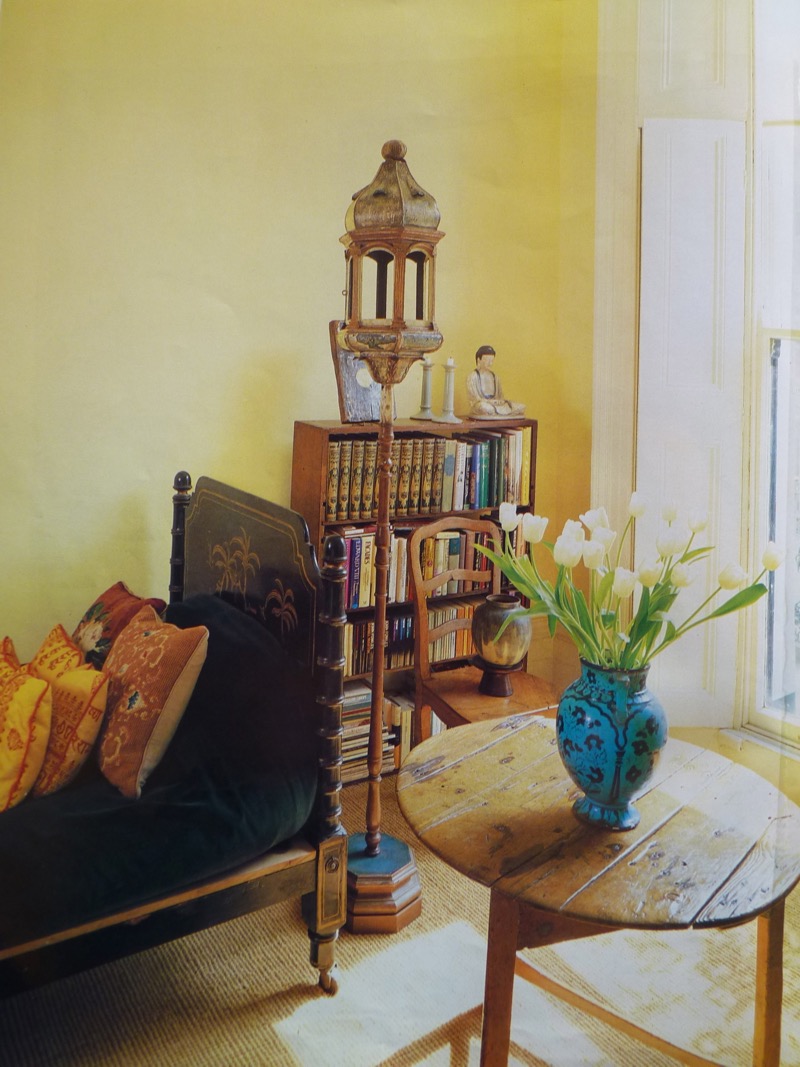
The first flat I owned was a first-floor bedsit in Notting Hill furnished with eighteenth and nineteenth century furniture and ethnic pieces but styled in a more pared-down, contemporary way.

And I was very influenced by Mary’s style. All these years later Hicks, Mary and Colefax are still part of what I do.I use ‘Hicks Tricks’ all the time… And subconsciously I’ve learned how to arrange furniture in a living room from Hicks and Billy Baldwin—a sofa and two elbow chairs and two more chairs on either side of them. Hicks was the master at arranging a space for six or eight people to chat and sit together. The end result does not look like a circle, but if you move the chairs a little it works like a conversation circle.
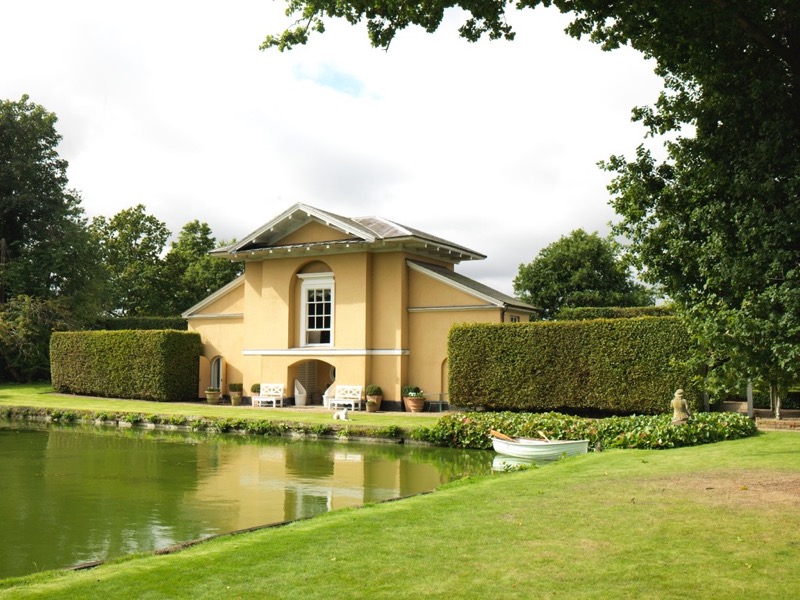
Almost the day I left Fox Linton I acquired the lease on the Temple in Stoke by Nayland.

I had been dazzled by the house and its magic ever since seeing it in a book by David Hicks.
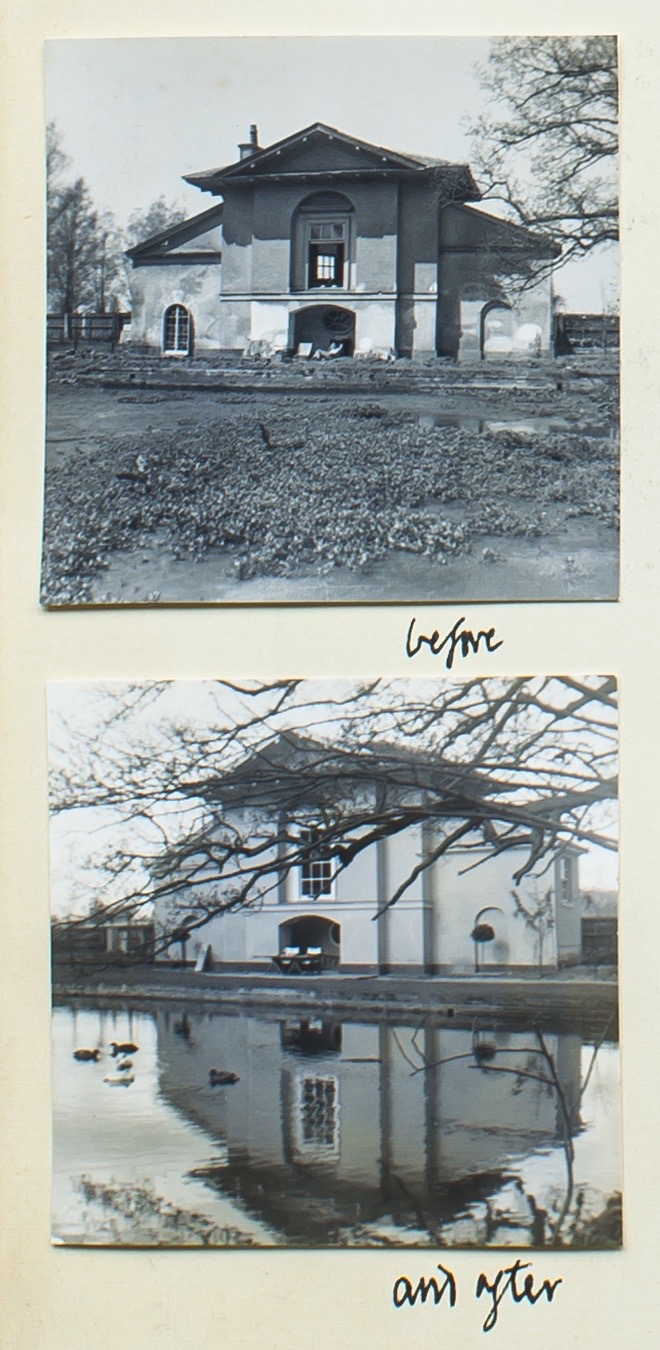
It was love at first sight in those pages in 1966

David Hicks at the Temple
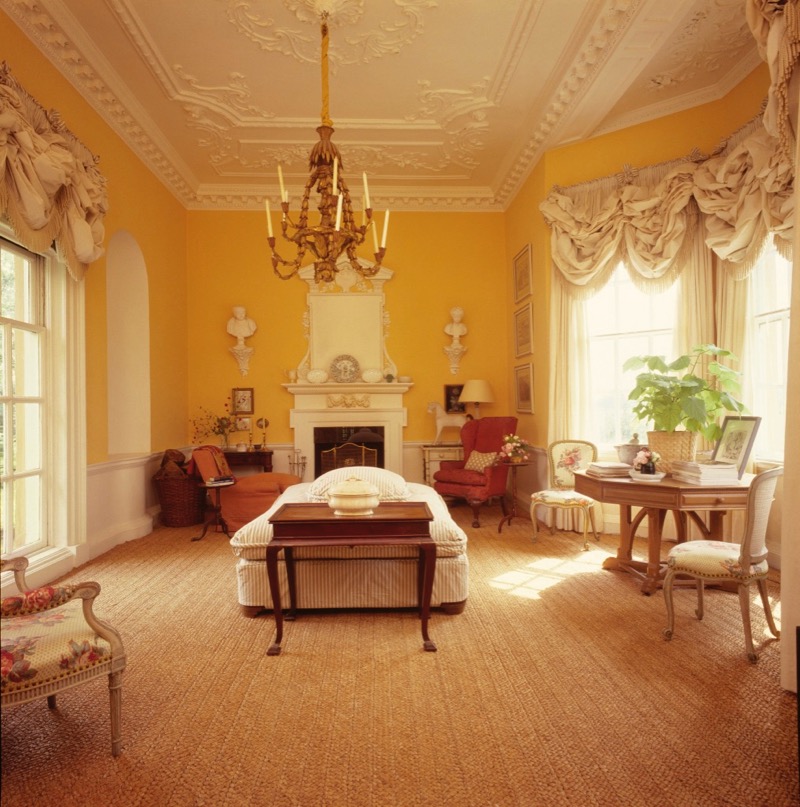
and love at second sight in 1984 when I arrived as a guest of Charles Beresford Clark. C.B C’s Temple, photographed for Living in Vogue, Conde Nast
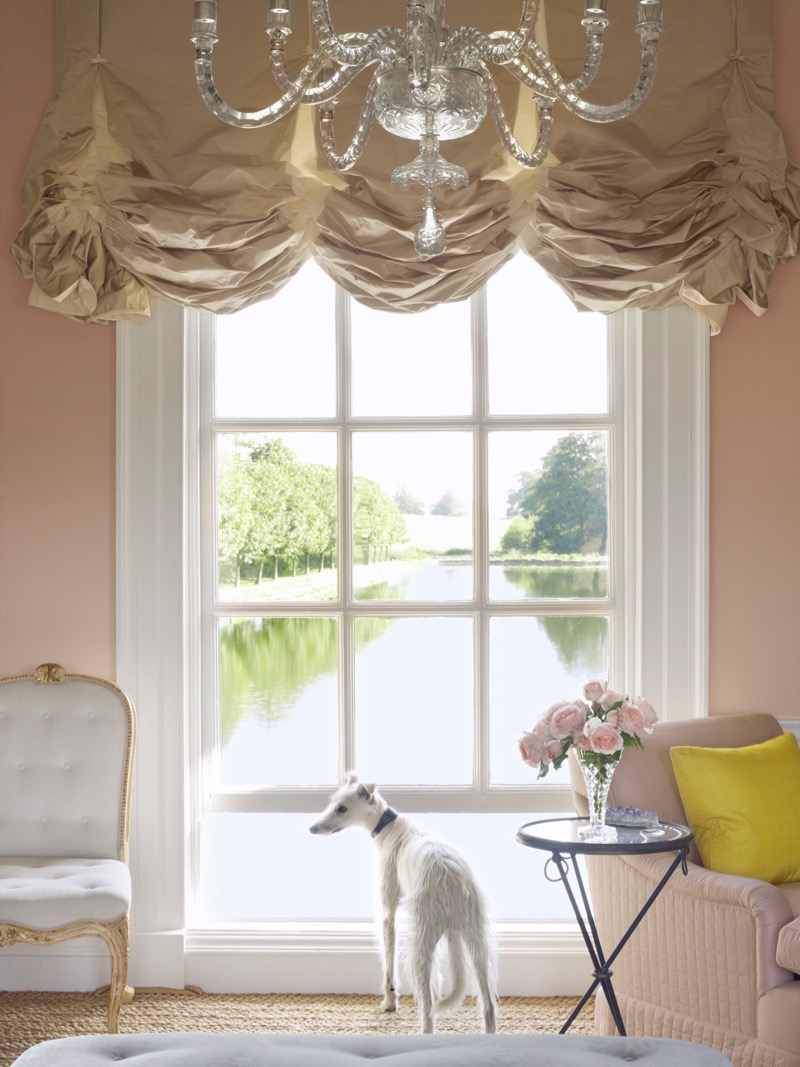
When offered the lease I sold my Notting Hill flat to acquire it, a decision I have never regretted. This truly is a place to love, it lends itself to fantasy of decoration as well as strict Palladian order, it has grace, proportion, timelessness, sitting in gentle landscape immortalised by John Constable! Rio, Veere’s white lurcher bitch, photographed at the Temple, Veranda magazine,
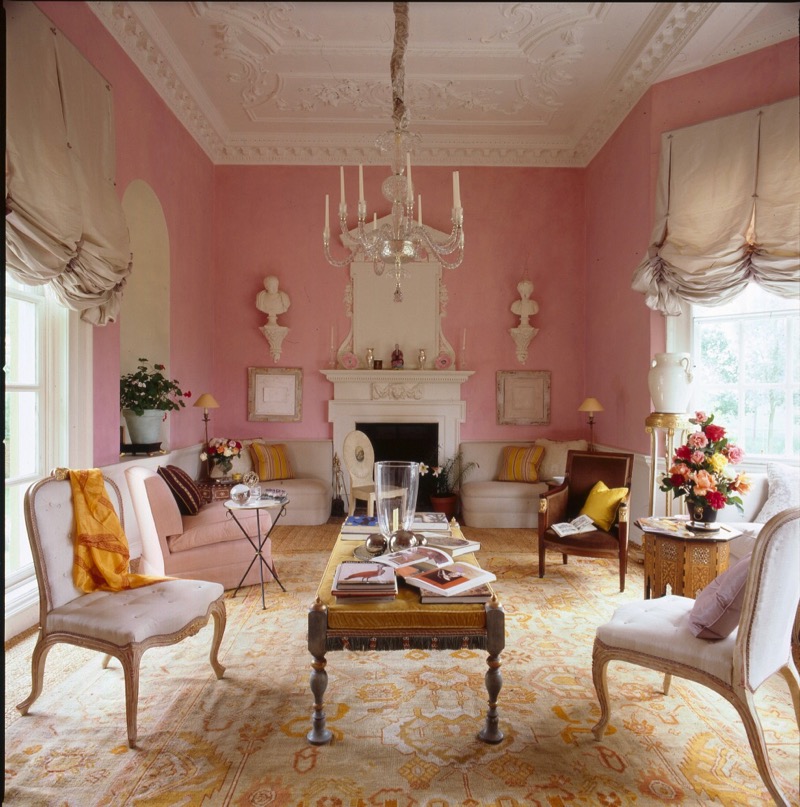
I have loved all the decorative incarnations I’ve played with here

and now for my last throw I may go back to Chinese Yellow. It’s the colour David Hicks used here (but with blue), and so did I when I decorated in ‘86.
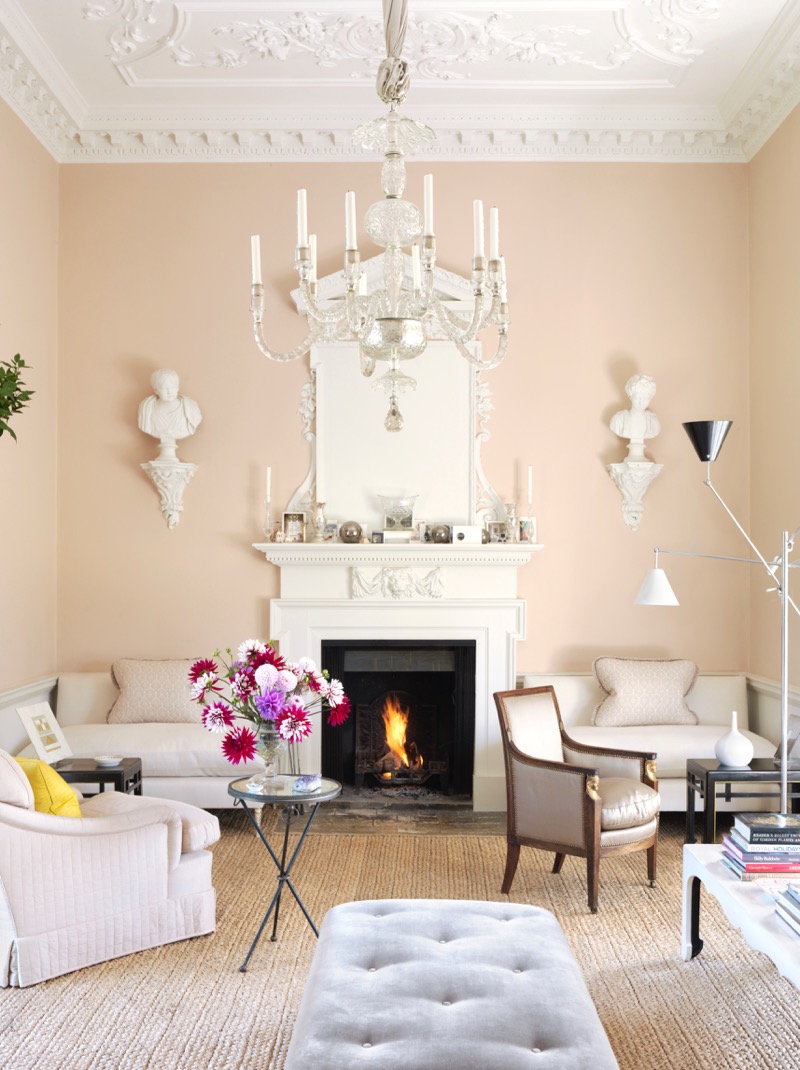
If it turns yellow again it could only be pink and yellow, my new favourite, with a good dollop of chintz ! Yellow and pink is it! Always happy and gay.

I am proud of the gardens I’ve made around the Temple
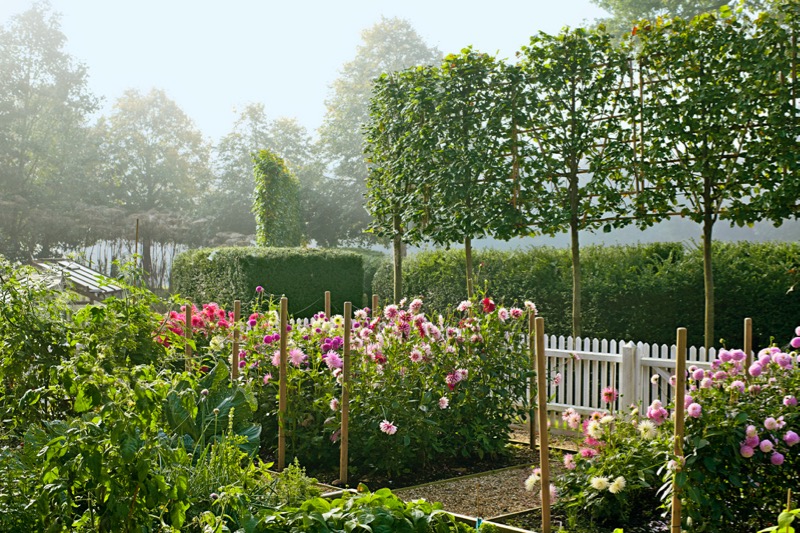
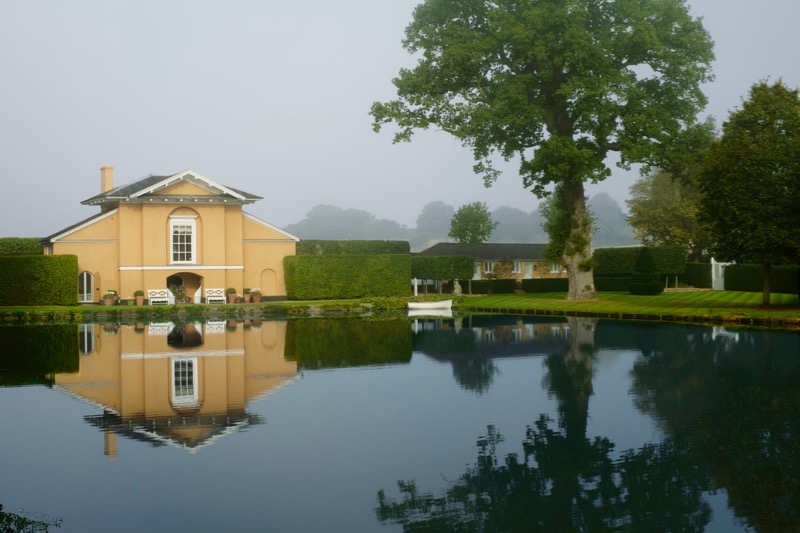
and of restoring the fishing canal whose dark limpid waters make a mirror for its severe grace.
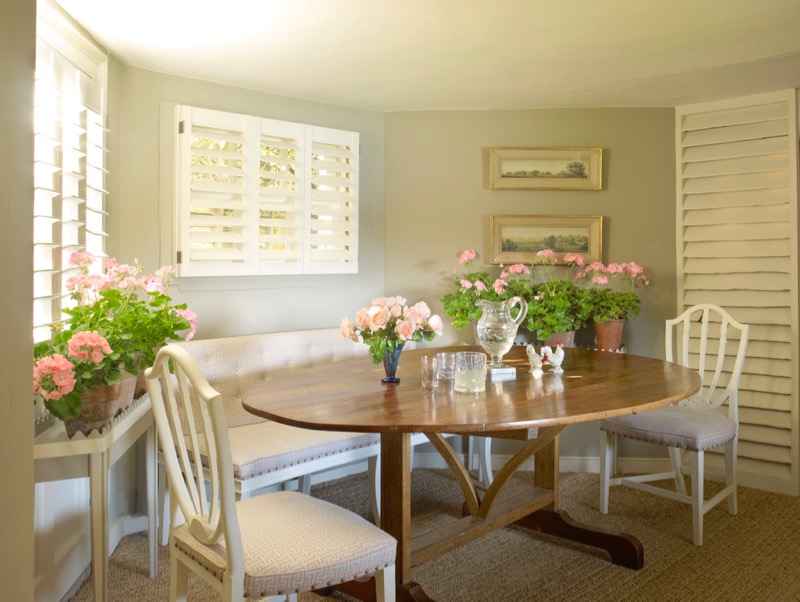
Ever since I arrived there have always been pink geraniums!! When I acquired the lease my wonderful landlord asked me to tea, I presume to see if he was happy to acquire a tenant he didn’t know. On learning I was from NZ his wife declared that she had lived there when her father was Governor General and all NZers were good people. Her husband then asked if I was the ‘marrying kind’? When I declared – Certainly not! – he was very pleased because he felt, thank goodness, the Temple was not suitable for children! The Temple, Veranda magazine,
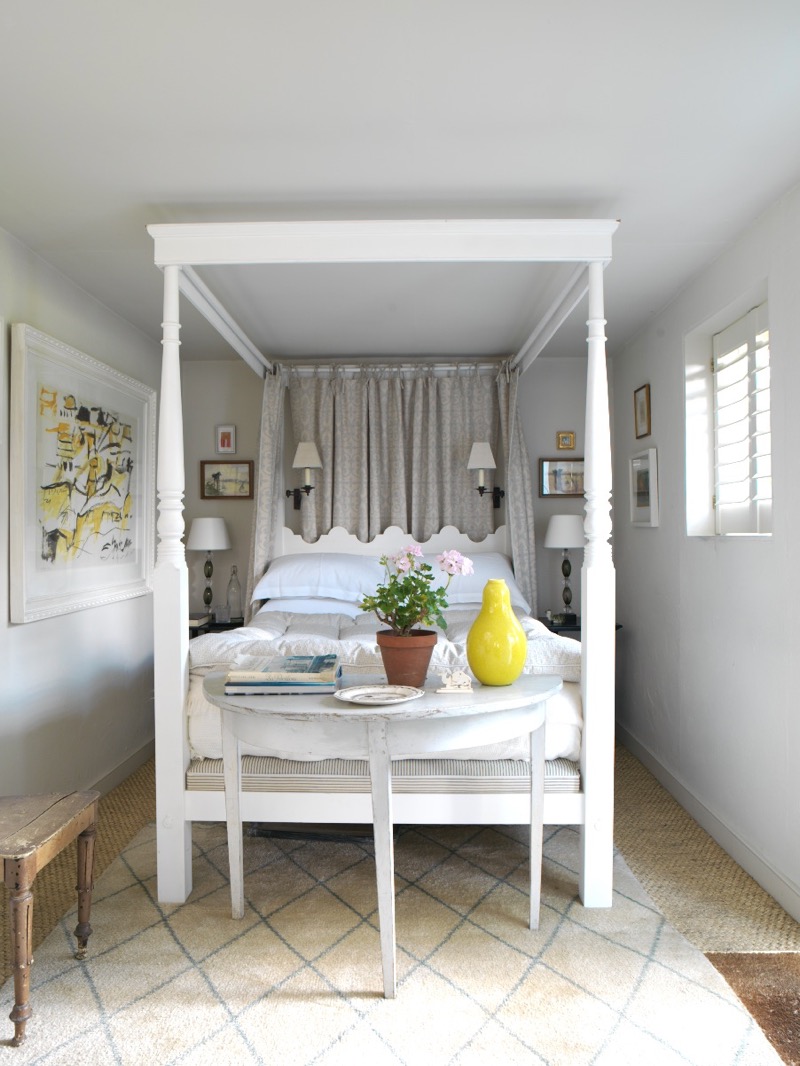
My short time with Colefax and Fowler taught me so much. More than anything else the company taught me to appreciate quality and tailoring. For good decoration must be of high quality otherwise, it ‘s little more than fashion and set dressing. A lot of people can make stage sets, but they are not designers. For that you need years of experience—it’s like couture.
I think a huge amount of time should be spent on bedrooms, particularly the mattress and the linens. I like bedcovers and simple sheets and blankets, not duvets…. I also dislike pillows or cushions all over the bed. What do you do with them when you are getting into the bed? Throw them on the floor? A bed should look inviting and when it’s covered in pillows, it’s not.
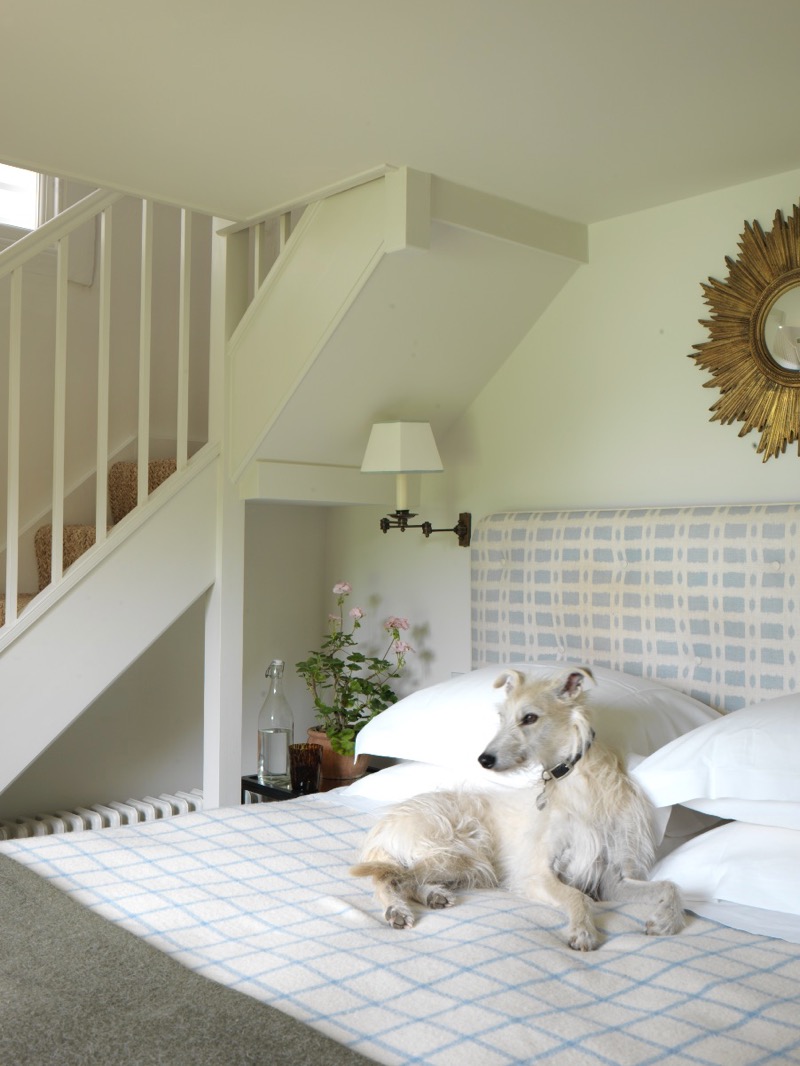
I will leave you with two more mantras of my own:

There should be one unlikely or even discordant note in every scheme. You shouldn’t make things too perfect. The Saloon at Gazebo, Veere’s house in Tangier
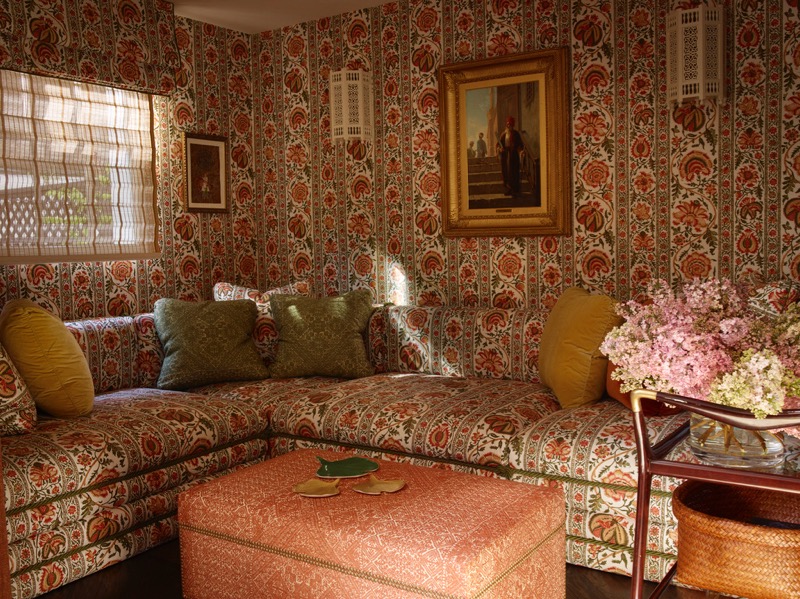
If I do a room for someone, I really care about them and not how it will look in a photograph. I want to make them feel safe, and I really want people to have a happy time when they’re in that space. Otherwise, what’s the point?
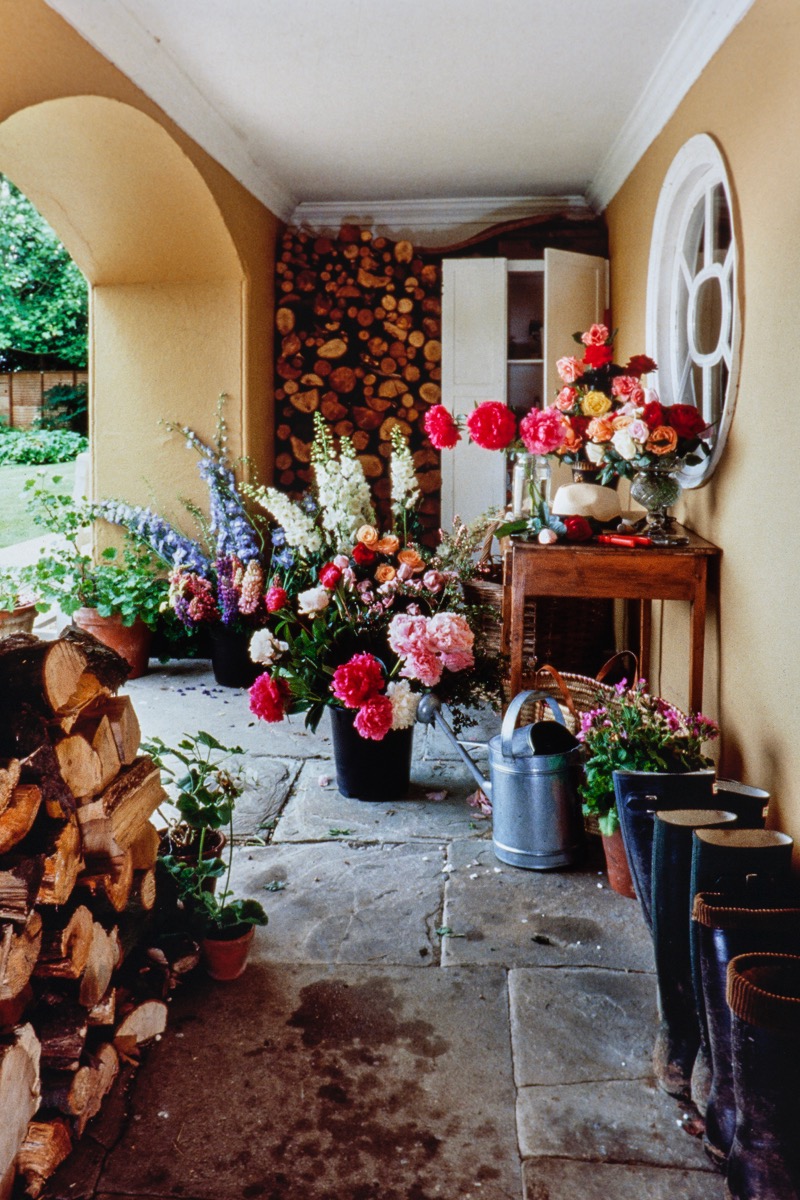
All photographs copyright Veere Grenney, Veranda magazine/Conde Nast, David Hicks and Ashley Hicks; grateful thanks for use

Very many thanks to Veere. Veere Grenney Associates, www.veeregrenney.com
(and to Lavinia, who helped a lot too, and Rita)

What an amazing decoration journey! One which shows how a home, the Temple, can shape a life and become the most splendid backdrop but also ongoing source of inspiration as it evolves and changes over time. I was at the Veere Grenney book launch at Chelsea Harbour in September 2018 and Veere’s tip to always have something “discordant” in a scheme which sings out has stuck with me!
How very lovely. And these past few months have been a very clear reminder about Veere’s excellent advice — “I want to make them feel safe, and I really want people to have a happy time when they’re in that space. Otherwise, what’s the point?”
A visual and thrilling walk through the houses of influence and creation – I marvel at the energy and creative skilfulness – where does it all flow from ? Star dust and effort ! Brilliant veere and Ruth !
Beautiful rooms and gardens.
Wonderful beautiful ❤️????
Veere, you are a gift! I love your style, attention to detail and symmetry but also the ability to bless the unusual piece or piece that makes one feel at home and brings them joy! Really fantastic perspective. A life well led, I’d say and lots more to give. I hope I get the opportunity to meet you in person in the future.
Beautiful journey of a naturally gifted man’who was influenced by the best. True to his Owen vision. has helped me understand my own journey as a designer of the same generation as he is.
Hi my name is John Grenney my father’s name was Joseph Leonard grenney God rest him . He was originally from Plymouth settled in Grimsby after the war. Just curious are you related to the Grenney family from Plymouth.
I have just watched your interview with Susanna Salk, in your stunning home and garden in Tangiers. I’m now reading about you, and wish to purchase your books.
I live in rural New Zealand, a retired Interior Designer, who has an Antique Shop in a Barn and 2 acres of developing garden. I am inspired by you sir, thank you.
Heartwarming to see the terracotta statue in Notting Hill (centrepiece on the round table) is still very much treasured and with him in his now Chesil Court apartment. A beautiful, mysterious and spiritual piece in the style of Lord Leighton.